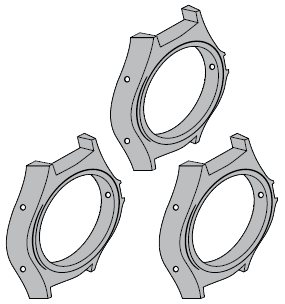Have you put a lot of thought into your next machine tool purchase? Do you know what to expect in the years to come? This whitepaper provides the 7 key factors to consider when purchasing your machine tool, so you can be prepared to make the right decision for your machine shop.
According to Jeff Murray, Gosiger’s Midwest Regional President, the real cost of ownership of a machine tool is a bit more complex than it may appear. When you are considering investing in a new machine tool, first work through these seven important factors that can add up and cost you money... or save you money.
The cost of a new machine tool can run thousands of dollars or even hundreds of thousands of dollars. High quality brands like Okuma usually require larger initial investments. Lower quality brands usually require a smaller initial investment – but over time, this decision can be quite costly.
When you have an issue with your machine tool, you want to get it addressed quickly to minimize downtime. Before you buy, find out how many service technicians are available to work on your machine tool – and how quickly they will respond. Gosiger has over 50 service engineers, (more than anyone else) so your machine tool will be serviced within 24 hours 90% of the time.
High quality machine tools like Okuma are designed to be thermally stable. This means that as parts are made and your factory floor heats up during the work day, your machine tool will automatically adjust - so your parts continue to be sized accurately. Thermal stability assures you and your customers of correctly sized parts, leading to fewer costly customer rejections and remakes. Higher efficiency on the factory floor means you can take on new jobs and make more money – rather than having to spend expensive time and materials fixing jobs that should already be completed.

Your operators need to be trained on any new machine tool. Most distributors charge for that training, especially if you have owned the machine tool for several years. Gosiger trains your operators free for as long as you own the machine tool. This can add up because operators often need a week of classes to become proficient on a machine tool. So as you hire new operators, you can be assured that Gosiger will provide the necessary training to make your team more proficient. For your convenience, free operator training courses are offered at Gosiger every month.
With a more accurate, thermally stable machine tool, you can market your services to a different type of customer: one who requires tighter part tolerances. Some examples of this could be found in the aircraft and automotive industries. When you’re able to hold tighter tolerances, you can produce parts that your competition won’t even be able to quote. You can likely charge more for your parts and therefore make more money from your machine tool.
With a less thermally stable machine or with a machine that doesn’t consistently produce accurate parts, your operators may need to intervene or create workarounds to get the parts you need. This extra attention means your operators are called away from other tasks, costing you more in labor –meaning that your operators produce fewer parts on your factory floor at any one time.
High quality machine tools are made to keep working on your factory floor for decades. A lower quality machine tool may only have half the working life of a higher quality tool. This leads to you having to buy machine tools more often, adding significantly to your manufacturing costs. A longer machine tool life span is a major cost factor because this one difference can add up to several extra decades of working life.
One steady Gosiger customer decided he wanted to save money on his machine tools. So he went with cheaper machine tools for five years. At the end of that time, he reported that even though his initial investment averaged 35% less, over the course of the five years, he spent the equivalent of that 35% on extra repairs, downtime and training...not to mention the cost of operator intervention, lost opportunities and shorter lifespan. He said that he learned from the experience: he could have been producing more accurate parts with less customer rejection on a more thermally stable machine.
In the end, he came back to Gosiger and to higher-quality machine tools, because it was a smarter business decision.
Make sure that you consider all Seven Factors every time you purchase a machine tool. Ask your distributor about each of the Seven Factors before you make your final decision. In the long run, it will pay off in fewer rejected parts, less downtime and in a better bottom line for your business.
To learn more about how you can minimize the cost of ownership of your next machine tool, contact your local Gosiger sales manager.
Have you put a lot of thought into your next machine tool purchase? Do you know what to expect in the years to come? This whitepaper provides the 7 key factors to consider when purchasing your machine tool, so you can be prepared to make the right decision for your machine shop.
